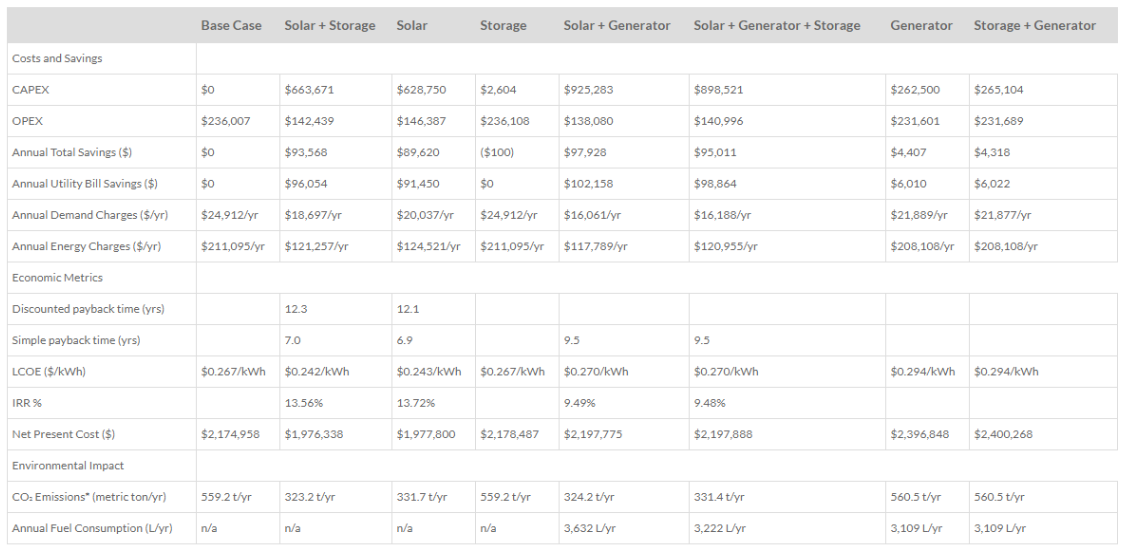The Australian energy industry is in a period of significant change with the rise of renewable resource use, decommissioning of power stations and increased desire for independent energy supply. According to the Australian Energy Statistics 2018 (AES) for 2016-17, oil held the largest share of energy consumption at 38%, whilst coal dropped by 1.0% to 32% of total consumption. There was a greater shift in generation towards independent sources which accounted for 12% of Australia’s electricity generation in 2016-17. Solar generation also increased by 18% whilst coal generation decreased by 11% to hold 63% of total generation in the same period (down from 80% at the beginning of the century [1]).
Australia’s total energy mix for 2016-17 is displayed by state or territory in Figure 1 below. Due to these changes and the vast array of energy options available, both independently and commercially, it is vital to assess and optimise energy installations.

Figure 1. Australian energy Mix by state and territory
What are the software options for energy system optimisation?
HOMER® Pro and HOMER® Grid are software options available to conduct economic assessments of new energy installations in any sector. The two software options differ in the type of energy system they are best designed to optimise. HOMER® Pro is designed for simulating and optimising energy installations related to microgrids whilst HOMER® Grid is better suited for hybrid generation systems reliant on demand charges.
What is HOMER® Pro (Microgrid)?
As of the 30th September 2019, Australia has over 3.41 million small scale renewable installations [2]. With the increase in adoption of renewable installations, especially that of solar, it is vital to simulate potential installations for stability and economic optimisation. HOMER® Pro allows users to input additional infrastructure to existing electrical microgrid systems or investigate potentially new installations to output sensitivity based optimised systems [3]. The software itself is only as reliable as the information input into the system. It is therefore important to be specific with the cost and specifications of each component in the system. HOMER® Pro gathers the solar information for the weather station closest to the electrical system site or can input specific data collected by the user. The software can simulate systems comprising biomass, hydro, wind, combined heat and power, battery storage, solar and non-grid generators (e.g. diesel). The optimisation itself is customised based on the user’s sensitivity analysis criteria. This can include, but is not limited to, solar radiation, diesel price and wind speed. This can then be combined with input information such as the lifetime of materials and diesel emissions to output an optimised electrical system configuration to meet expected demand and criteria specific to the installation. The simulation also identifies when system configurations will cause stability issues, estimates the total and running cost of the solution, and identifies the utilisation of each component (e.g. litres of diesel and MWh of battery storage) to provide an estimated pricing per kWh for the installation. Optimisation results are produced graphically and in a tabular form seen in Figure 2.


Figure 2. Example HOMER® Pro Tabular Optimisation and Sensitivity results [5]
What is HOMER® Grid (Hybrid)?
HOMER® Grid allows consumers to design an energy system for the best rate of return. It is designed for installations that utilise a mixture of resources including utility (the grid) to meet its energy demands. The simulation accounts for tariffs, demand charges, self-consumption and energy arbitrage [4] to provide the best economic system design for existing or proposed systems. The user has design options to input electric load, utility, components, incentives, outages and resource information. Due to the large range of simulation options, HOMER® Grid can account for different load scenarios and can therefore be used for small project situations as well as large installations. It can, for example, provide ways to control the system during outages based on critical and non-critical component requirements. Based on the input components, economic climate and users project requirements, HOMER® Grid outputs an optimisation report summarising options based on each designs cost and savings as seen in example Figure 3 below.

Figure 3. Example HOMER® Grid Simplified Sensitivity Report [6]
When should energy system optimisation be conducted?
As Identified above, energy system optimisation can be conducted at different stages of any energy system installation. It can be used for initial designs, evaluation of existing systems, future designs and upgrades to existing systems. It can similarly be used on a project basis for stability control, outage load compliance and cost minimisation studies.
If you would like more information about energy system optimisation or to discuss whether HOMER® simulation software can be applicable to specific sites or projects, contact Power Control Engineers.
References:
[1] Australian Government Department of the Environment and Energy, Australian Energy Update. [Online]. Available: https://www.energy.gov.au/sites/default/files/australian_energy_update_2018.pdf
[2] Australian Government Department of the Environment and Energy, Energy Supply. [Online]. https://www.energy.gov.au/government-priorities/energy-supply
[3] HOMER, HOMER Pro. [Online]. https://www.homerenergy.com/products/pro/index.html
[4] HOMER, HOMER Grid. [Online]. https://www.homerenergy.com/products/grid/index.html
[5] HOMER, HOMER Pro User Manual. [Online]. https://www.homerenergy.com/products/pro/docs/latest/index.html
[6] HOMER, HOMER Grid User Manual. [Online]. https://www.homerenergy.com/products/grid/docs/latest/optimization_report.html


